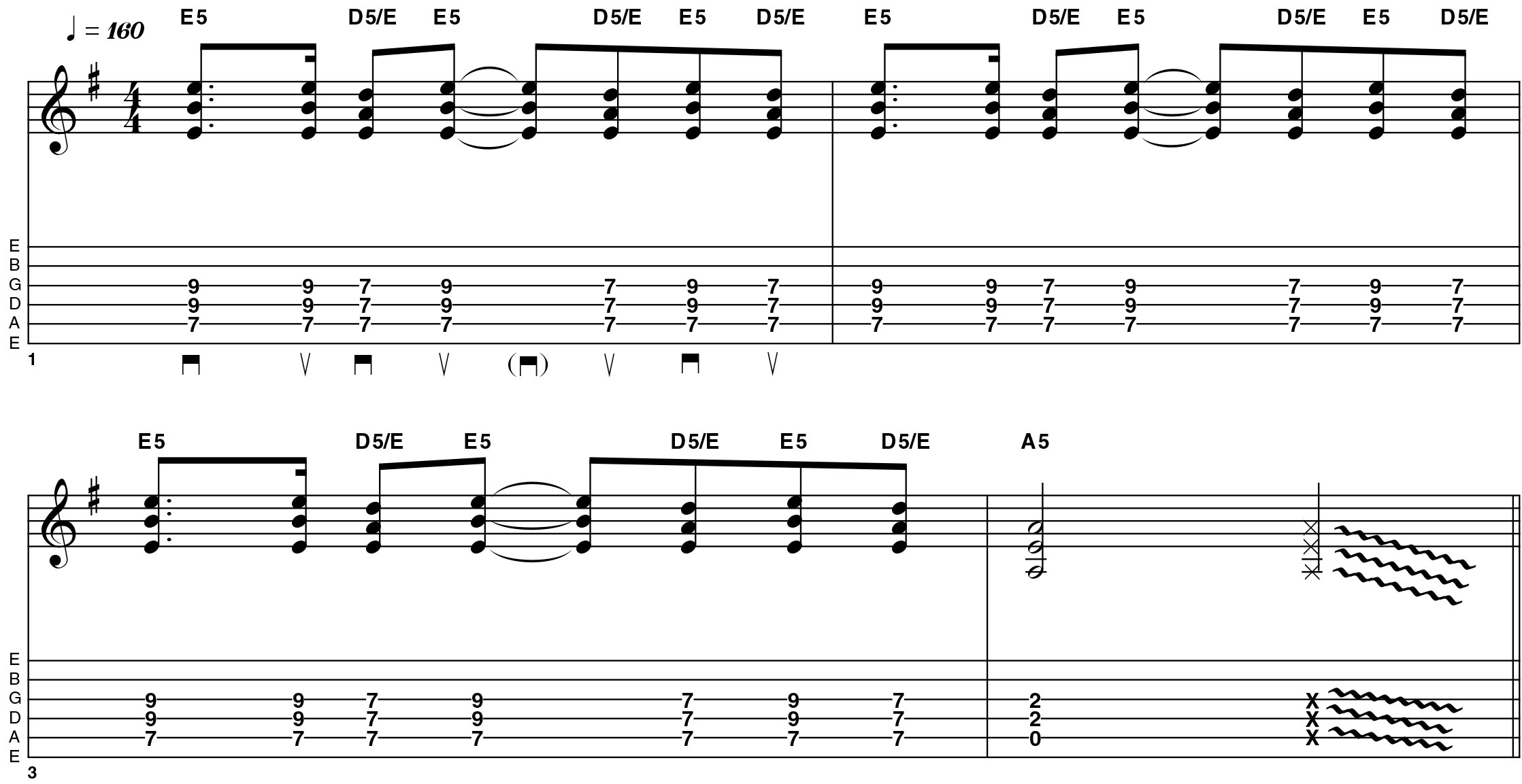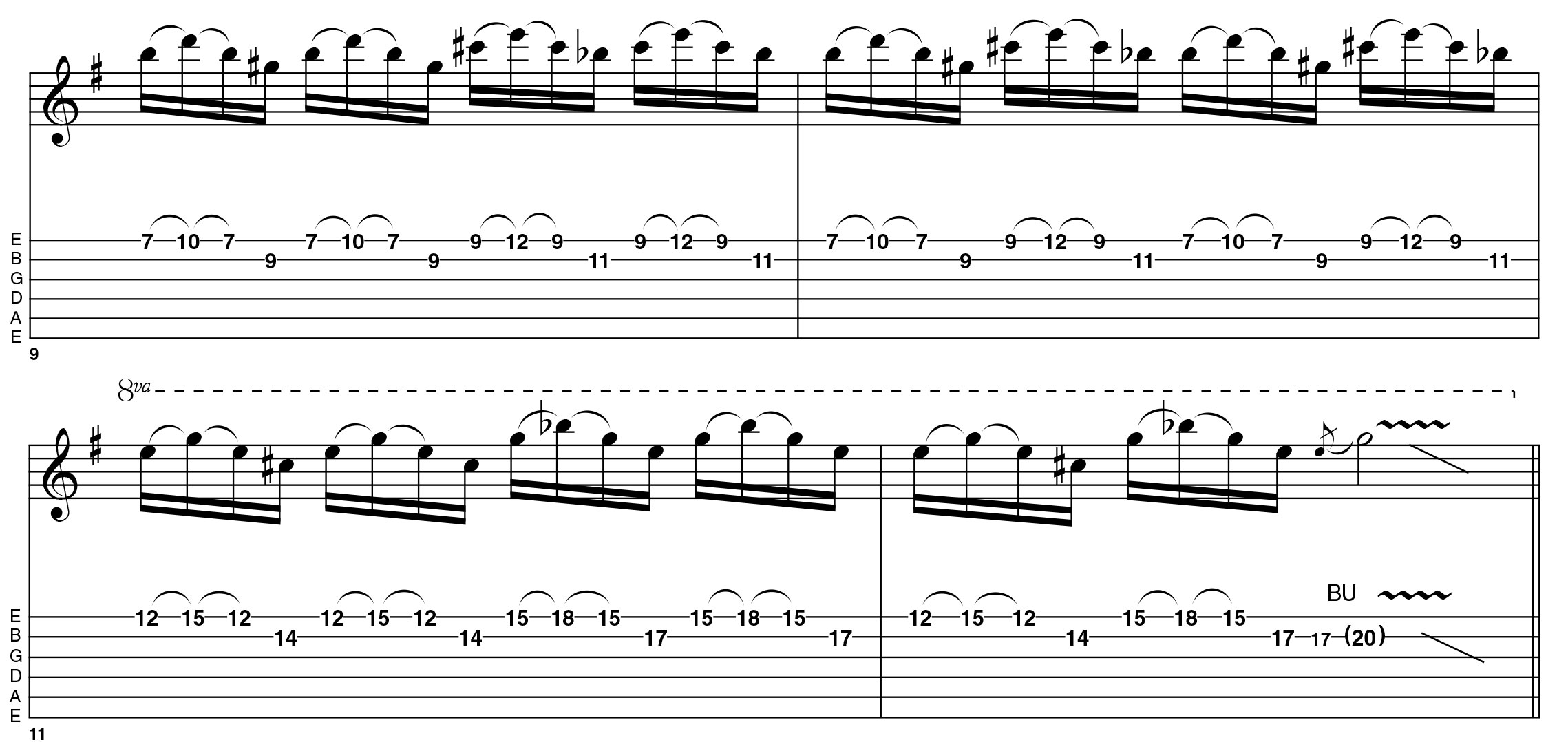6 guitar tricks you can learn from Michael Schenker
Learn how to shred like the prodigiously talented German axeman

German rock/metal guitarist Michael Schenker has had a long and successful career that has seen him play with UK rockers UFO, followed by The Scorpions (along with his guitarist brother Rudolf) and then in his own solo bands such as the Michael Schenker Group (MSG), Temple Of Rock and most recently with his hugely successful Michael Schenker Fest.
No matter who Michael plays with you can always recognise his style. Technically, he’s fantastically accurate and has that all-too-rare ability to play with fire, fluidity and melodicism in equal measure. He always has a great tone that is often distinctly EQ’d via a wah-wah set at a fixed/static ‘sweet spot’.
Guitar-wise, apart from a very brief time using a Gibson Les Paul, he has stuck loyally to Flying Vs. These were originally Gibsons but for a while he’s been playing his own signature models made by Dean. Amplification is very easy: I have never seen or heard of him playing anything that isn’t Marshall! - either a 50-watt 1987X (MKII) Plexi style or 50-watt Model 2205 JCM800s.
To my mind, he is one of those players who very early in their career found and settled on an approach, equipment and musical style that, on the whole, has remained pretty much consistent throughout.
Without further ado, let’s look at a few choice techniques.
Example 1 - Doublestops


This demo track contains all the musical examples played in order, kicking off after a short four-bar Lights Out-influenced rhythm guitar intro with some typical Schenker-style rock ’n’ roll-derived sliding doublestops.
The effectiveness of these is in part due to the 3, 3, 2 phrasing of the eighth note accents and slides. Notice also how in bars 5-7 these double stops contain a 3rd (G#) and a b7 (D) followed by a b3 (G) and 6th (C#). This second doublestop could also be a b7 (G) and 3rd (C#) of A7, implying an A7/E move.
Get the MusicRadar Newsletter
Want all the hottest music and gear news, reviews, deals, features and more, direct to your inbox? Sign up here.
Example 2 - Consistent pattern licks

The guitar fingerboard is obviously great for visualising physical shapes and patterns, and some of Michael’s most common repeating licks can be described as being pattern-orientated.
In the phrase shown here, you can easily see how it is exactly the same lick played at four different fingerboard locations. As you play it, make sure you take note of what intervals are being used and also how they relate to the underlying chords. Doing this will help facilitate their reapplication in other varied musical situations.
Example 3 - Pedal tone string bends

This example contains Michael’s most commonly used lick device - actually a kind of ‘trademark’ he uses in pretty much every solo! It involves various string bends that are alternated with repeating fretted pedal tone notes.
In this example the notes E and B are the pedal tones and the bends are either a semitone (bar 15), a tone (bar 13) or a minor 3rd (bar 14). Note that Michael would rarely use his fretting hand fourth finger for this sort of lick and would often only use fingers one and two.
This point would certainly apply to all of bars 13-16 - try it for yourself, it works really well, especially at lively tempos such as the 160bpm seen here. Incidentally, I personally use fingers one, two and three, but I think that is probably more borne out of habit than necessity!
Example 4 - Chromatic approach notes and large bass bends

Throughout this example, you can see how the root (E) and b3 (G) of an Em chord have been approached from a semitone below. This gives a nice and distinctive classical/Pink Panther-theme flavour to the lick.
The 5th (B) isn’t left out either - this note appears at the end as a result of the large Major 3rd bend from the G (fret 3) up to the B (fret 7) on the low E string. Make sure your strings are properly stretched before attempting this bend, and don’t try it with just one finger - it will hurt!
Example 5 - Descending sequence lick

In common with example 2, this idea is again based on a consistent pattern. On this occasion, the notes at frets 12, 14 and 15 of the high E, B and G strings are used in a descending fours sequence.
These notes could be seen as being E Dorian with an added b5 (E F# G A Bb B C# D E) - (1, 2, b3, 4, b5, 5, 6, b7, 1). Or they could just as easily be seen as being E Blues Scale E G A Bb B D E (1, b3, 4, b5, 5, b7, 1) with an added 6th (C#) and 9th (F#).
Both ways are equally valid, as is just thinking about them as simply being a cool pattern you can use in your soloing!
Example 6 - Legato phrasing and neck bending

The final ideas I simply had to cover. In bars 23-24, we have some triplet legato phrasing followed by a short descending idea using fretting hand legato and slides. Michael’s style expands on both of these ideas, particularly the phrasing seen in bar 24, which is often played one-handed with his guitar held aloft in true guitar god fashion!
Finally, in bar 26 we have a ‘trademark’ neck bend. This is obviously Schenker’s way of imitating a tremolo arm. If you try it, you will find that you don’t really need to be very physical at all. Just gently - at your own risk - hold the guitar fairly firmly, then push and release the back of the headstock. The low E string should then go down by about a tone and back again.
“We are so unencumbered and unbothered by these externally imposed rules or other people’s ideas for what music should be”: Blood Incantation on the making of Absolute Elsewhere and how “Data from Star Trek” saved the album – and the studio
“I feel like that song had everything we needed to come back with”: Bring Me The Horizon’s Lee Malia on Shadow Moses, its riff and the secrets behind its tone, and why it was the right anthem at the right time









